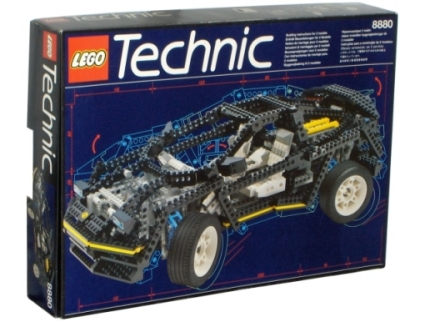The Technic designers have found many different ways to create angles and beams that are not parallel and perpendicular, but one of my favorites is by using Hinge Plates.
As you look at the image of the Super Car above, you notice that there are a lot of weird angles which really add to the appearance. The usefulness of hinge plates goes beyond appearance, but can add to MOCs structure. If you are building something that requires three or six faces or sides, these hinge plates really come in handy. I have used the following technique several times.
Here is probably the most basic, where you can create a three way beam where the beams are at 120 degrees from each other. This setup is surprisingly stable.
Take that technique and throw on some diamonds on the outside and you have a hexagon shape.
Again, that shape is fairly stable as well and will allow you to create a more round shape for things like robot bases and platforms. This is the technique I used in my Stewart Platform.
You can also create simple triangles. Here is an example of an equilateral triangle and two right triangles using the 3-4-5 right triangle system, but in this case it is a 6-8-10 right triangle.
If you take six of the equilateral triangles and match up their sides, you can get an extremely stable hexagon.
A good piece of advice for you is that you should always use hinge plates in pairs as shown below. You should have one on top of the beam and one below. Heck, if you stack more than two hinge plates, it just get more stout. It gets even more stable when you stack more plates on top to hold the hinge plates in place.
I also used hinge plates to create the 120 degrees that are needed to locate the motors on the Lego Flexpicker.
Here is a better view of how the motors are mounted on the Flexpicker.
The only real drawback I see for some of you out there is that you may or may not have many of the legacy Lego Technic beams. You should get more of those parts too!











No comments:
Post a Comment